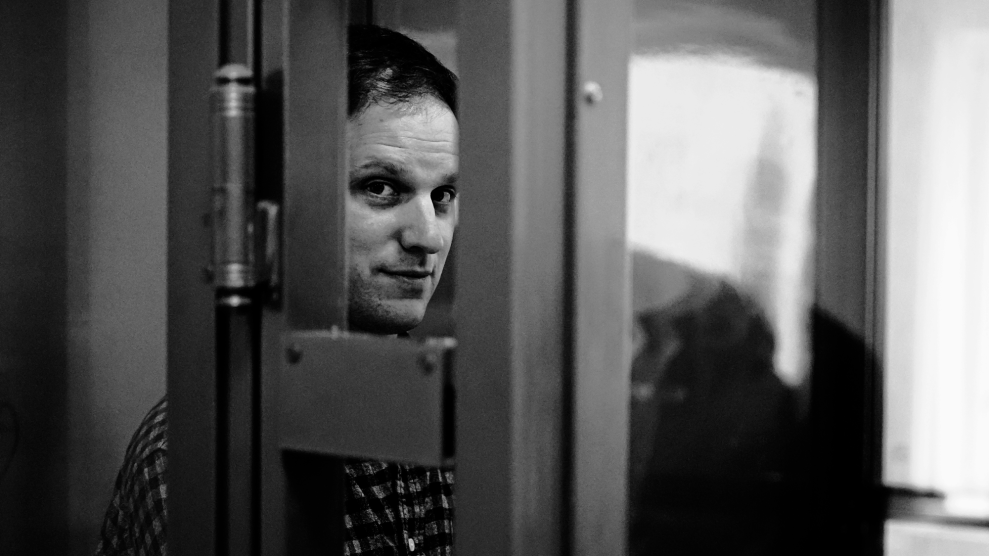When the Cold War melted, the Pentagon wasn’t the only one scrambling to find a credible threat. Hollywood, which had long gorged itself on Red-fear films, also needed a new cash cow. The terrorist peril may have been hatched by our military brass, but — as this survey of ’90s blockbusters attests — DreamWorks, Paramount, and 20th Century Fox were only too eager to handle the propaganda. —Tim Dickinson
True Lies
James Cameron. 144 minutes. 20th Century Fox, 1994.
The threat: Arab terrorists of the “Crimson Jihad” nab four Kazakhstani warheads and promise to nuke Miami unless the U.S. withdraws from the Persian Gulf.
The foil: Secret agent Schwarzenegger
The good stuff: “We’re going to catch some terrorists. We’re going to beat the crap out of them. You’re going to feel a lot better.”
Box office: $146 million
The Rock
Michael Bay. 135 minutes. Buena Vista, 1996.
The threat: Traitorous Marines capture Alcatraz and threaten to shower San Francisco with implausibly deadly VX gas.
The hype: “One teaspoon of this shit … will kill every living organism within an eight-block radius!”
The foil: FBI agent Nicholas Cage teams with former jailbird Sean Connery to break into the Rock, neutralize the rockets, and force-feed VX to the last of the mercenary turncoats.
Box office: $134 million
Face/Off
John Woo. 138 minutes. Paramount, 1997.
The threat: Terrorist Nicholas Cage hides a nerve-gas bomb somewhere in Los Angeles and rasps: “I’m about to unleash the biblical plague that ‘HELL’-A deserves!”
The twist: Cage gets offed during an FBI sting, and special agent John Travolta must steal his face — literally — to go undercover and locate the bomb. But Cage miraculously recovers and dons Travolta’s mug. The two-faced terrorist then disarms his own bomb and infiltrates the highest ranks of the FBI.
The foil: Cage-faced Travolta returns from the underworld to unleash his own brand of terror on Travolta-faced Cage.
Box office: $112 million
Die Hard With a Vengeance
John McTiernan. 131 minutes. 20th Century Fox, 1995.
The threat: Riddling mastermind Jeremy Irons plants a bomb in a Manhattan elementary school.
The twist: The bomb is only a ruse. Irons — not unlike the Pentagon — exploits the terrorist canard to steal the nation’s gold reserves.
The foil: Detective Bruce Willis and Good Samaritan Samuel L. Jackson blow up Irons and save the world economy.
Box office: $100 million
The Peacemaker
Mimi Leder. 123 minutes. DreamWorks, 1998.
The threat: A “Muslim-Croat-Serb,” toting a stolen Russian warhead in his backpack, wants to blow up the United Nations.
The foil: Acting chair of the Nuclear Smuggling Group, Nicole Kidman, teams with Lt. Colonel George Clooney to hunt down the psychopathic Yugoslav on the streets of New York.
The good stuff:“God, I miss the Cold War.”
Box office: $41 million















